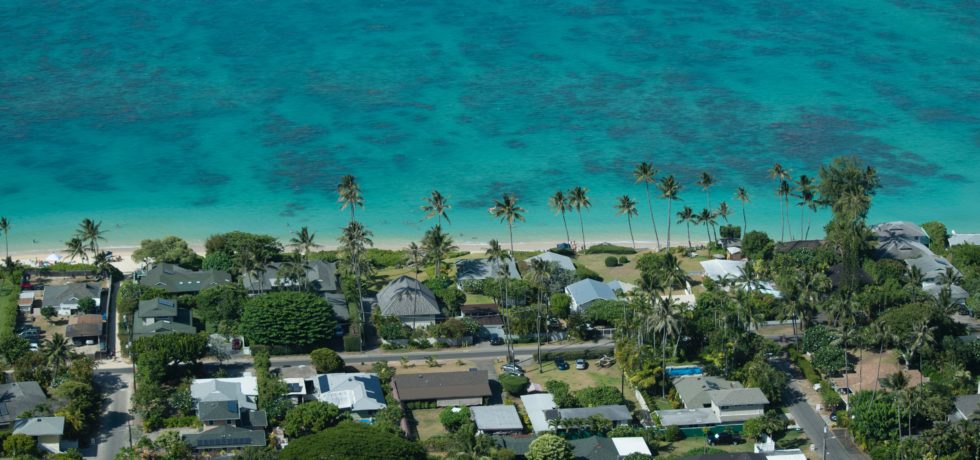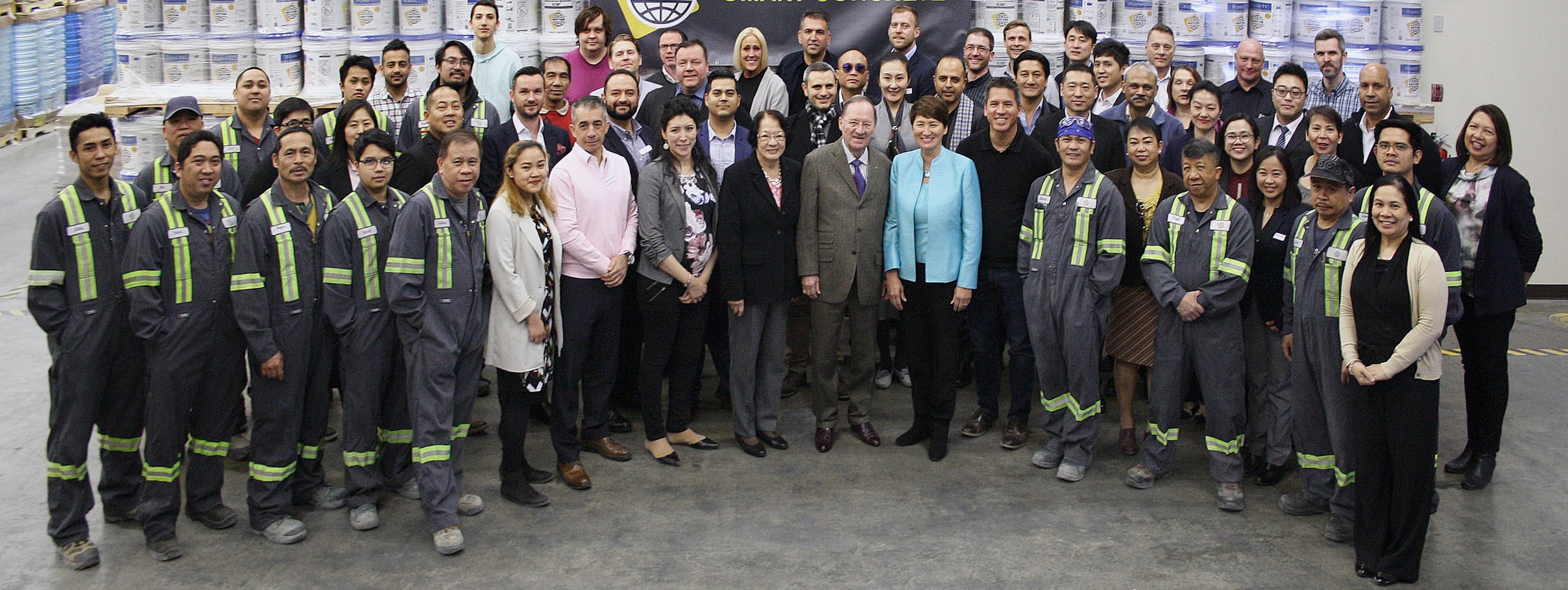If you’re new to construction projects in the Hawaiian region, then you’ll need to become familiar with floodproofing to ensure your work stays standing for years to come. Otherwise, it’s likely your work will come across one of the many flash flood events Hawaii experiences. In fact, according to the city and county of Honolulu, Hawaii in general sees around 11 flash flood events annually.
Of course, these events typically occur during Hawaii’s wet season, which is from October to April. However, that doesn’t mean you’re safe for the rest of the year. As the city and county notes, flash floods can happen at any time.
And the risk of them happening is only going to increase over the years. This is mainly because Hawaii’s sea level is rising. For instance, it is now around 25.4 cm (10 in) higher than it used to be in 1950. Data from the National Oceanic and Atmospheric Administration has also made it clear that the sea level has risen by, and will continue to rise by, 2.54 cm or an inch every four years.
It’s unlikely to change either without an overall solution to its many and varied complex causes. Two of which include global dilemmas, such as the increase in overall water coming from melting glaciers and ice sheets and the land sinking.
In recognition of this, homeowners and businesses typically participate in the National Flood Insurance Program (NFIP). It enables them to cover the cost of flood damage when most homeowners’ and business insurance policies do not. However, as part of the program, participants are encouraged to adopt floodproofing standards that the Federal Emergency Management Agency (FEMA) sets out. These include rules for how construction needs to be handled for effective floodproofing.
So, what do you need to do to follow these guidelines?
Well, as waterproofing experts with experience in FEMA floodproofing, we’ve created this overview to help get you started.
Consider the Base Flood Elevation When Floodproofing
You’ll first want to think about the guidelines surrounding base flood elevation (BFE) as it will significantly impact your Hawaiian construction.
According to the Baltimore Office of Sustainability, the BFE is a computation to determine the elevation of floodwater during a base flood, which is a flood level that has a 1% chance of being met or exceeded annually. Of course, you don’t need to calculate this yourself. You just need to look up where your worksite is on a flood insurance rate map (FIRM). From there, the map should give you the BFE for your area.
Once you have it, you’ll finally be able to start planning for the following minimum requirements from the NFIP:
- Elevate the lowest floor in a residential building
- Do the same for a non-residential building or have it dry floodproofed to the BFE
- Construct anything below the BFE with flood damage-resistant materials
- Avoid having a basement extend below the BFE
Depending on where you are geographically located, however, there may be other actions you should consider as well. These might include waterproofing your particular project 1.83 m (6 ft) above grade and tanking certain sections.
As you can tell, these requirements all focus on protecting vulnerable areas under the BFE with the right materials and keeping areas with frequent human activity away from the potential flood zone. After all, any construction below the BFE is part of that zone. Anyone or anything that is in that area around Hawaii will eventually come across varying degrees of flooding. And with that experience comes plenty of destruction. As FEMA notes, buildings that don’t have elevated lower floors are often destroyed, damaging anything residing within at the time of disaster.
Of course, that’s only what happens away from the coast. What happens closer to the coast can be much harsher.
That’s why you need to carefully consider the BFE. It could make or break how long your building lasts.
Check to See If You Need a FEMA Elevation Certificate
You’re not the only one who needs to know the elevation levels of a project either. The NFIP needs to know too. As the main source of flood insurance for Hawaiians and other Americans elsewhere, it asks that people under their coverage have and maintain a record of their lowest floor elevation for both new and majorly renovated buildings.
To do that, the owner of your project needs a FEMA elevation certificate.
If their project already has one, you may not need to worry about obtaining another certificate. This is most likely the case if you’re just doing a minor renovation with little substantial change to the structure. However, to be safe, you should still check with FEMA themselves. (You can do so by visiting their contact web page.)
On the other hand, if your client’s project is a brand-new one, they’ll want a certificate. And they’ll need to get one through a licensed surveyor, engineer, or architect. So prepare to be the person who does this or needs to work with someone else in that role. Whoever is chosen for this task will need to complete, seal, and submit the certificate to a community code official.
In some cases, they may need to do this multiple times. For instance, they may be required to do this when the construction team has set the lowest floor level and when they’ve completed all construction before a certificate of occupancy has been issued.
As part of this process, you or a team member will want to check the elevation of the newly constructed building multiple times. This should happen throughout several key stages of construction. And it will help you certify and sign off on the following required information:
- The owner’s name and address
- Data from a FIRM that presents the NFIP’s flood zone and elevation
- GPS coordinates
- Adjacent grade elevation
- Elevation for the lowest horizontal structural support
- The utility equipment/machinery’s lowest form of elevation
Use Flood Damage-Resistant Materials Below the BFE
Of course, elevation levels are only one aspect you need to manage to help your client meet their NFIP requirements. NFIP regulations also stipulate that any part of the building under the BFE should make use of flood damage-resistant building materials.
And by flood damage-resistant, they mean materials that are able to withstand direct interaction with floodwaters for at least 72 hours. So anything below BFE should survive with little more than the need for cosmetic repairs. That might mean sanding certain areas, doing joint repairs, or re-painting the material.
The chosen material should also be flood damage-resistant in a way that doesn’t degrade any nearby materials.
There Are Several Material Classes, Though, So Choose Your Material Carefully
Before picking out your flood damage-resistant materials, however, you should take a look at FEMA’s classification for them. After all, FEMA is quite specific about what will and won’t be considered acceptable for floodproofing below the BFE.
Under their guidelines, they list the following five material classes:
- Class 1 — These materials are not at all suitable for flood damage resistance. In fact, they have no resistance to damage from clean water (such as potable and gray water) or even moisture. As a result, you’d typically use them only in dry spaces.
- Class 2 — Similar to Class 1 materials, Class 2 materials are also not a great defense against clean water damage. However, they can handle moisture. So you’re more likely to use them in dry spaces that might experience infrequent water vapor and seepage issues.
- Class 3 — One level above the previous two classifications, Class 3 materials can resist clean water damage. But that doesn’t mean they are flood damage-resistant. It’s true they can handle being submerged in clean water during periods of flooding. And they can even survive the wetting and drying process that’s a part of that. However, the owner may not be able to get them cleaned up, which can leave the material covered in harmful pollutants.
- Class 4 — Once you get to Class 4 materials, you’re at the flood damage-resistant stage. With Class 4 materials, you get items capable of resisting damage from the wetting and drying process of flooding. And the owner can successfully clean them after flooding. They still aren’t very durable, however, when it comes to resisting damage from moving water. Still, they can be submerged in floodwaters for interior spaces without any special waterproofing protection.
- Class 5 — The best for floodproofing, Class 5 materials are highly resistant to floodwater damage. That means they can survive the wetting and drying process and damage from moving water. The owner can also successfully clean them after flooding to remove most harmful pollutants. Because of this combination of advantages, it’s a type of material permitted to be used for partially enclosed or fully outside spaces that may be fully exposed to flooding.
Taking this information into account, you will want to choose between Class 4 and Class 5 materials. Both are considered to be an acceptable flood damage-resistant material to FEMA. However, they don’t offer the exact same protection. So choose based on the risk of your project.
For the Least Amount of Risk, You Might Want Waterproof Concrete
One of the few Class 5 structural materials that FEMA permits you to use for floors, walls, and ceilings is concrete. This is likely due to how versatile it can be. After all, there are solutions you can add to a concrete mix to enhance its qualities. For instance, with our Krystol Internal Membrane™ (KIM®) admixture, you can permanently waterproof your concrete.
Its application is extremely simple to employ too! All you need to do is throw the dissolvable KIM bag into your concrete mix during batching. The admixture will then spread throughout the mix, giving your concrete the ability to react to water ingress.
That way, when the poured concrete does come into contact with water, it is chemically activated. The crystals formed from this reaction will interlock and continue to grow so long as there is water, filling in concrete pores, capillaries, and micro-cracks and blocking any pathways for water.
All of which gives the concrete and reinforcing rebar protection from moving water and resistance to the residual pollutants that come with it and its wetting and drying process.
In short, it’s a great way to minimize the risks associated with building in a flood zone while still using a very ubiquitous building resource like concrete.
Minimize Your Risk Even Further with Kryton Expertise
So, now, you know some of the most important aspects of BFEs, FEMA elevation certificates, and flood damage-resistant materials. But that’s just the tip of the FEMA iceberg! For even more in-depth information on the topic, don’t hesitate to talk to one of our representatives. We are a leading authority on both concrete waterproofing and FEMA floodproofing and can set you on the right path to floodproofing effectively.







